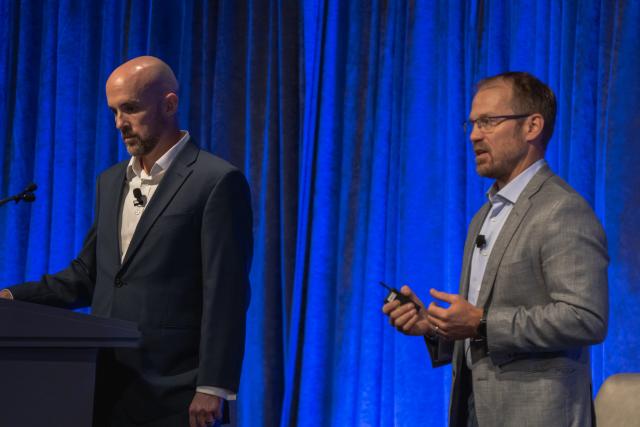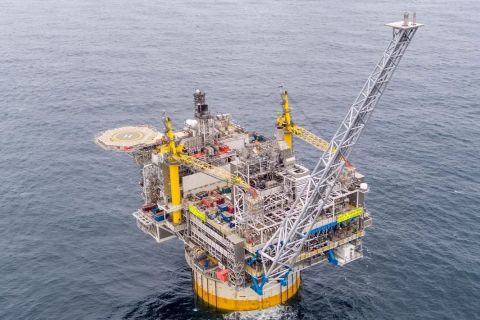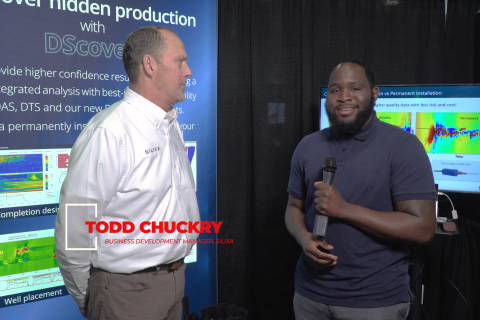
Thomas Sharp, director of permitting intelligence for Arbo, and Justin Carlson, co-founder and chief commercial officer at East Daley Analytics, at Hart Energy's America's Natural Gas conference on Sept. 27. (Source: Hart Energy)
U.S. natural gas that’s stranded is more than likely going to stay that way, with some projects literally requiring an act of Congress (see the Mountain Valley Pipeline) to move new projects forward.
Speaking during the “Un-Stranding U.S. NatGas” session at Hart Energy’s America’s Natural Gas conference on Sept. 27, Justin Carlson, co-founder and chief commercial officer at East Daley Analytics, said demand growth of 17.4 Bcf/d is expected between 2023 and 2030.
“LNG will represent over 20% of U.S. demand, and that's a huge, obviously, shift from where we have been,” Carlson said.
Both supply and infrastructure are needed to meet that demand, and the growth period will likely be volatile, he said.
It’s “something that our market is going to have to monitor really, really closely,” Carlson said.
The 17.4 Bcf of growth will come from 14 LNG projects, over half of which have received final investment decision (FID). The question is whether gas supply will be able to meet the demand generated by new LNG projects in different regions. In some cases, gas supply exists but hasn’t received FID because there is no destination for production.
Production growth “effectively is stranded until we get new projects,” he said.
Once LNG projects reach FID, Carlson said he expects gas production projects to get approval to move forward.
Pipeline detective
Thomas Sharp, director of permitting intelligence for Arbo, also sees LNG driving demand for natural gas in the U.S.
But additional takeaway capacity coming is subject to regulatory risks, particularly if a pipeline must cross state lines and triggers Federal Energy Regulatory Commission (FERC) interest, or if it is a new pipeline, he said.
“These things play into the risk that any pipeline developer faces when they're trying to figure out how to move gas towards the demand center,” he said.
Pipeline projects to provide new capacity include: the LEAP Gathering Lateral Pipeline serving the Haynesville, which came online early; Whistler, which is now online in Texas; the Permian Highway, expected onstream by year-end; and Matterhorn, which is expected onstream in the third quarter of 2024, serving Texas.
Determining the status of intrastate pipelines in Texas and Louisiana is no easy task, Sharp said. With no FERC-like agency, no central repository of regulatory data is available.
“We have to be detectives. We have to figure out what's actually happening because you have disaggregated data across different states reporting different things,” he said.
Tracking activities like hydrostatic testing, clean air permits and land acquisition reveal clues about the status and location of projects, he said.
Regulatory issues can complicate pipeline projects, particularly those that cross state lines.
“They face obviously even more risk,” Sharp said. “We know that it took an act of Congress to get the MVP project to go through. So what does that mean for us? Essentially these greenfield [pipelines] are just extremely hard to build.”
Litigation is also used as a delaying tactic to keep pipelines from being built, and now the same strategies are being used to oppose renewable energy projects such as offshore wind farms, Sharp said.
“What all this adds up to is a lot of headwinds for interstate pipelines,” he said.
Recommended Reading
Tech Trends: QYSEA’s Artificially Intelligent Underwater Additions
2024-02-13 - Using their AI underwater image filtering algorithm, the QYSEA AI Diver Tracking allows the FIFISH ROV to identify a diver's movements and conducts real-time automatic analysis.
Subsea Tieback Round-Up, 2026 and Beyond
2024-02-13 - The second in a two-part series, this report on subsea tiebacks looks at some of the projects around the world scheduled to come online in 2026 or later.
Exclusive: Silixa’s Distributed Fiber Optics Solutions for E&Ps
2024-03-19 - Todd Chuckry, business development manager for Silixa, highlights the company's DScover and Carina platforms to help oil and gas operators fully understand their fiber optics treatments from start to finish in this Hart Energy Exclusive.
CERAWeek: AI, Energy Industry Meet at Scary but Exciting Crossroads
2024-03-19 - From optimizing assets to enabling interoperability, digital technology works best through collaboration.
Cyber-informed Engineering Can Fortify OT Security
2024-03-12 - Ransomware is still a top threat in cybersecurity even as hacktivist attacks trend up, and the oil and gas sector must address both to maintain operational security.






